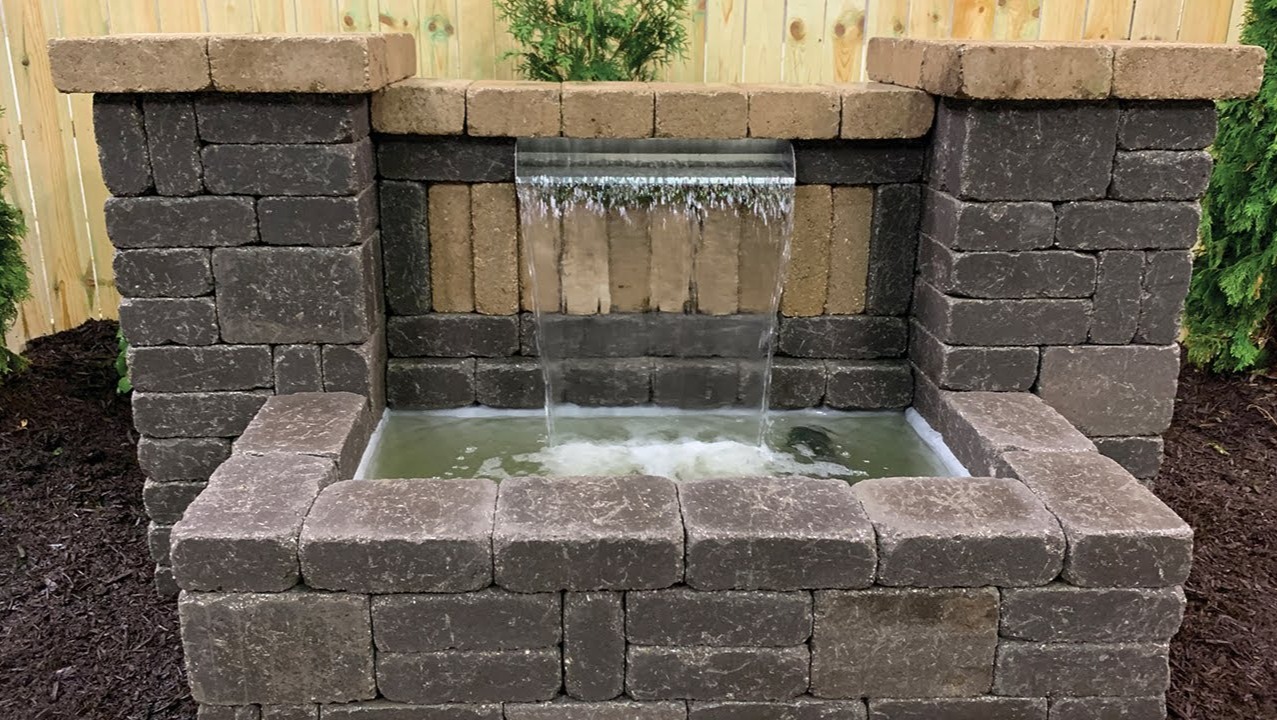
2024-03-05T12:44:20
A cascading water feature where water falls out from a stainless steel tank, creating a cascade effect into a basin below. This type of water feature can add elegance and tranquility to any space, whether it's indoors or outdoors. Here are some considerations for creating such a feature: Selecting the Stainless Steel Tank: Choose a stainless steel tank of appropriate size and shape for your desired cascade effect. Ensure that it's watertight and can withstand the water pressure. Designing the Cascade: Determine the design of the cascade, including the angle at which the water will flow out of the tank and the shape of the cascade as it falls into the basin. Experiment with different configurations to achieve the desired aesthetic. Basin Design and Construction: Construct a basin beneath the cascade to catch the falling water. The basin should be large enough to accommodate the flow of water and prevent splashing outside the designated area. It can be made of various materials such as concrete, stone, or plastic, depending on your preferences and budget. Pump and Water Circulation: Install a pump inside the tank to circulate the water and create the cascade effect. Ensure that the pump is properly sized to handle the volume of water and the desired flow rate. Position the pump discreetly to maintain the visual appeal of the water feature. Decorative Elements: Enhance the aesthetics of the water feature with decorative elements such as rocks, plants, or lighting. These can complement the cascading water and create a more inviting atmosphere. Maintenance: Regular maintenance is essential to keep the water feature functioning properly. This includes cleaning the tank, basin, and pump regularly to prevent algae growth and debris buildup. Overall, a cascading water feature with water falling from a stainless steel tank can be a striking focal point in any space, providing a sense of serenity and relaxation with the soothing sound of flowing water. The noise level of a cascading water feature, such as the one described with water falling from a stainless steel tank into a basin, can vary depending on several factors: Water Flow Rate: The flow rate of the water can affect the noise level. Higher flow rates will generally produce more sound, while lower flow rates will be quieter. Design of the Cascade: The design of the cascade, including the angle and height of the water as it falls, can influence the noise level. A gentle, gradual cascade may produce less noise compared to a steep, fast-flowing cascade. Pump Type and Power: The type and power of the pump used to circulate the water can impact the noise level. Quieter, more efficient pumps may produce less noise, while larger or less insulated pumps may be louder. Surrounding Environment: The surrounding environment can also affect how the sound of the water feature is perceived. For example, if the water feature is located in a quiet, peaceful garden, the sound may blend in and be less noticeable. However, if it's in a noisy urban environment, the sound may stand out more. Generally, cascading water features tend to produce a gentle, soothing sound that many people find relaxing and conducive to conversation. However, if the noise level is too loud or distracting, it may interfere with conversation. In such cases, you can adjust the flow rate or positioning of the water feature to minimize noise while still enjoying its visual appeal. Ultimately, whether a cascading water feature will disturb conversations depends on the specific characteristics of the feature and the preferences of the individuals involved. If possible, it's a good idea to test the water feature in its intended location before finalizing its installation to ensure that it complements the atmosphere and doesn't disrupt conversations.

Have a question? Ask here!
Required fields are marked *